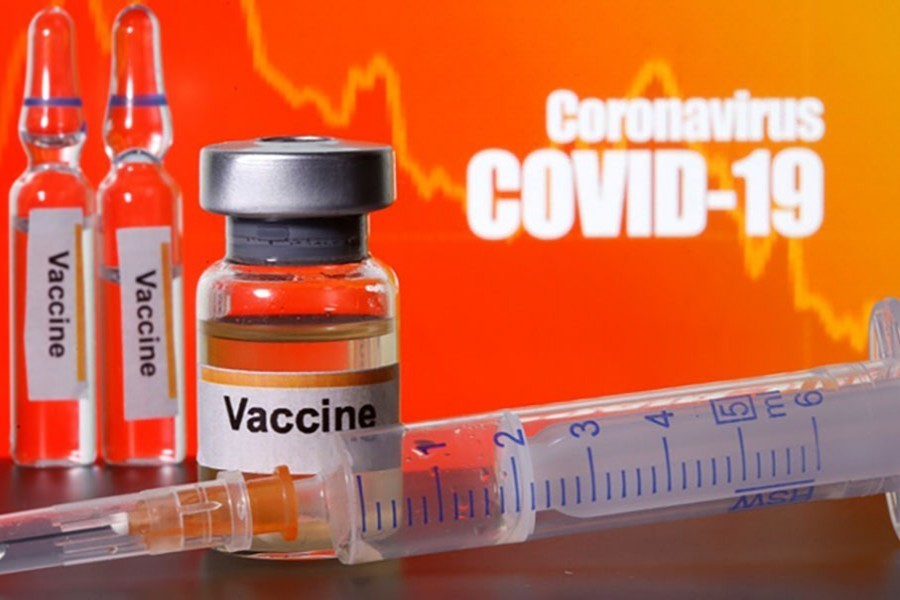The world is waiting with great expectations for the three anti-Covid-19 vaccine candidates produced by the US-origin Pfizer-BioNTech and Moderna and the UK-based Oxford/AstraZeneca. They would be ready for mass vaccination of the peoples once they get the clearances from their respective drug control authorities. The two US-origin vaccine candidates have been progressing fairly and may get clearance for commercial production within weeks. The UK authorities have already given clearance to the vaccine made by Pfizer-BioNTech and ordered 30 million doses for their people. This is big news as the Pfizer-brand vaccines get certification so early from a third country. But questions remain as to when and how such heartening developments in the rich West would also be celebratory for the underprivileged parts of the world. At the same time, the world at large wants to believe that the vaccines so far developed in the US and the UK will pass the ultimate tests of their efficacy and safety when applied to millions of healthy people across the globe.
It is to be noted that this is for the first time in the history of an epidemic-turned-pandemic that so many vaccines are at their various stages of development almost simultaneously. More interestingly, different technologies are being used for the vaccines under development. And it is also for the first time that some of those potential vaccines are going to be produced within such a short span of time.
In fact, those at the forefront of vaccine research were facing an unprecedented challenge. The reason is despite the impressive technological advancements made in every sphere of human endeavour especially in the last century, humanity was in effect caught unawares by the new virus. Traditionally, it takes decades before a vaccine is perfected for mass use. But as the pandemic was raging across the globe leaving a trail of death and devastation on a scale unheard of before, it was an existential challenge to modern science itself. What is the use of the wonders of modern technology including medicine, if it cannot find an answer to just another of the viruses that attack our respiratory system? It was also a matter of prestige for the scientists in the field of medical research. So, they had to take the challenge and develop a vaccine in record time. However, the recent advancements in biotechnology came to their aid. And it was the fruits of genetic engineering that made it possible for researchers to skip some of the time-consuming steps followed in the traditional method of vaccine research. And the same technology promises to help them manufacture large quantities of vaccines within a very short period of time.
One may recall that the pandemic was first reported from Wuhan in China hardly a year ago!
However, in the history of both curative and preventive medicines, it also so happened that their negative impacts on human health were reported many years after those drugs went into mass production and were in use by people. Chloramphenicol, for example, was one such drug (an antibiotic) that was withdrawn from market after it was found that it could cause genetic disorder and leukaemia among the users. Some drugs' harmful side effects are detected early, while for others those become evident after many years of use. And at a time of stiff competition among pharmaceutical companies producing similar drugs for marketing, any negative report about a drug from its users may leave a devastating impact on its production. So, the manufacturers are always edgy about such sensitive information. Sometimes litigious people may take advantage of the law against the harmful side effects of a drug and claim a huge sum of money as damages. Of course, there are instances of genuine cases whereby the victim may demand redress. On this score, a very recent incident of this kind may be cited as an example here. A Chennai resident of India is reported to have recently served a legal notice to the Serum Institute of India (SII). It is to note that SII is manufacturing Covishield, the vaccine being developed by Oxford/AstraZeneca. The Chennai resident in question has identified himself as a volunteer for the Covishield's clinical trial. His wife is learnt to have complained to an Indian electronic news channel that after the vaccine was injected into her husband's body as part of the trial, the latter suffered serious neurological disorder. In consequence, the person lost his marketing job in a US company as he could not concentrate in his work. However, the SII has instantly rejected the claims made by the complainant saying that the symptoms allegedly caused by the vaccine had nothing to do with the clinical trial of the Covishield. The SII further claimed that the anti-coronavirus vaccine candidate, Covishield, being developed by the Oxford University and AstraZeneca was 'safe and immunogenic' and that it won't go into massive use until it is proved safe and effective.
However, such allegation by a volunteer of an under-trial vaccine will not hold water for another reason. At a trial stage volunteers are bound by certain conditions with the company when they enter an agreement. The issue would be quite different for a case where the person claiming to be a victim is a member of the public and the drug being questioned is already in the market.
But still these are very sensitive issues that a vaccine under trial has to face squarely before it can obtain its clearance from the certifying authorities.
Bangladesh has a stake in the 'Covishield' being developed by the Oxford University and AstraZeneca. Notably, the government has signed a MoU with SII, the manufacturer of 'Covishield' in India, to get 30 million doses of the vaccine. So, we would be interested in every story that may evolve during its trial phase.


